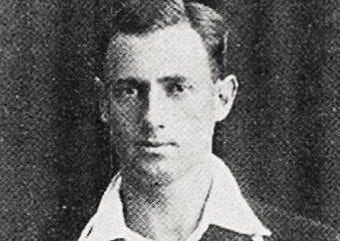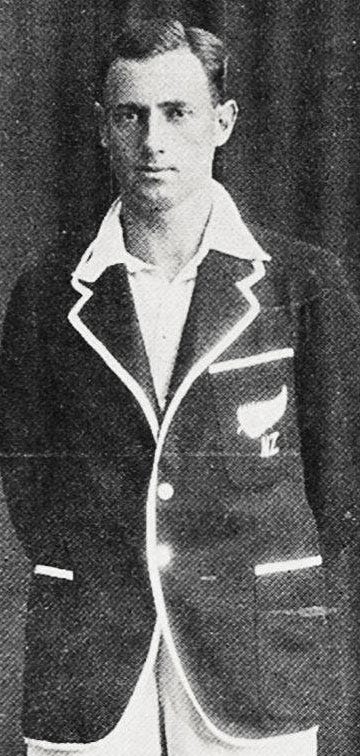Roger Blunt's reputation in cricket has been centred around his batsmanship, but one of the highlights of his career was based on the leg-spin bowling in which he first attracted interest at higher levels.
He would become known as one of New Zealand's finest batsmen, scoring 7953 first-class runs in 123 games at 40.99, including 15 centuries, and was the first New Zealander to score a triple century, achieving the feat for Otago against Canterbury, with 338 not out in 1931/32
New Zealand and Canterbury cricketer Roger Blunt
Playing Yorkshire in early July on the first tour of England by New Zealand in 1927, Blunt, the Durham-born son of an academic, who took his family to Christchurch when his son was six months old, was in the midst of a tour that was successful enough for him to be named one of Wisden's Five Cricketers of the Year.
Yorkshire's batting was headed by opener Herbert Sutcliffe, who did all his batting for England in partnership with one of the greatest batsmen, Jack Hobbs.
Blunt, who finished his career with 214 first-class wickets at 31.01, had been called into action several times during the tour and found himself bowling to Sutcliffe and his fellow England representative Percy Holmes. Used as the second change, Blunt was preferred ahead of fellow Cantabrian leg-spinner Bill Merritt.
The record shows that Blunt bowled Sutcliffe for 42.
Sutcliffe was in no doubt the New Zealander had done him. He explained to a cricket writer,
It was a genuine 'wrong-un'. This young bowler from New Zealand was sending down a lot of tricky stuff, and between the hittable balls I had to keep a pretty sharp eye on the best-pitched trappy deliveries.
The ball that got me was a master of deception. It pitched on my leg stump and I positioned myself to glance it to fine-leg; but, instead of leaving me on the leg side, the ball nipped in at great pace, eluded the bat, and struck me on the pad just above the knee, whence it was deflected straight up past my head, finally falling on my right shoulder and from there dropping into my wickets.
It certainly was a surprise ball, and an experience I should not readily forget.[1]
However, it was but a momentary cause for celebration at the Park Avenue Cricket Ground in Bradford. Holmes finished the innings unbeaten on 175 while he had the company of Maurice Leyland, who scored 118 in a stand of 247 for the third wicket. Yorkshire was dismissed for 377 with another New Zealander better known for his batting, Ces Dacre, taking 5-35, which would remain the best bowling of Dacre's career. In 269 first-class games, most of them for Gloucestershire, he took only 39 wickets at 31.25.
The game was rained off, with New Zealand 133-7 in its first innings.
Later in the tour, when playing Surrey, the New Zealanders claimed the other half of the great England Test opening partnership, Hobbs, cheaply as well. Set a target of 308 to win by New Zealand, Surrey and Hobbs had the horror of losing the master batsman for a duck before Surrey had scored.
The destroyer on this occasion was Wellington allrounder, Herb McGirr. Hobbs was undoubtedly delighted to see a ball he felt he could despatch to the leg boundary only to see the ball be taken with a superb catch by Merritt.
It's worth pointing out that Hobbs, in the first innings, had scored 146 before he joined Sutcliffe in falling to Blunt's bowling, this time caught by Dacre.
Surrey scored 377 in reply to New Zealand's 313. The tourists hit 371 in the second innings, with Stewie Dempster scoring 101, and Surrey ran out of time in their chase at 284-8, this time Merritt having 5-103.
[1] Herbert Sutcliffe, Star (Christchurch), 1 October 1927



